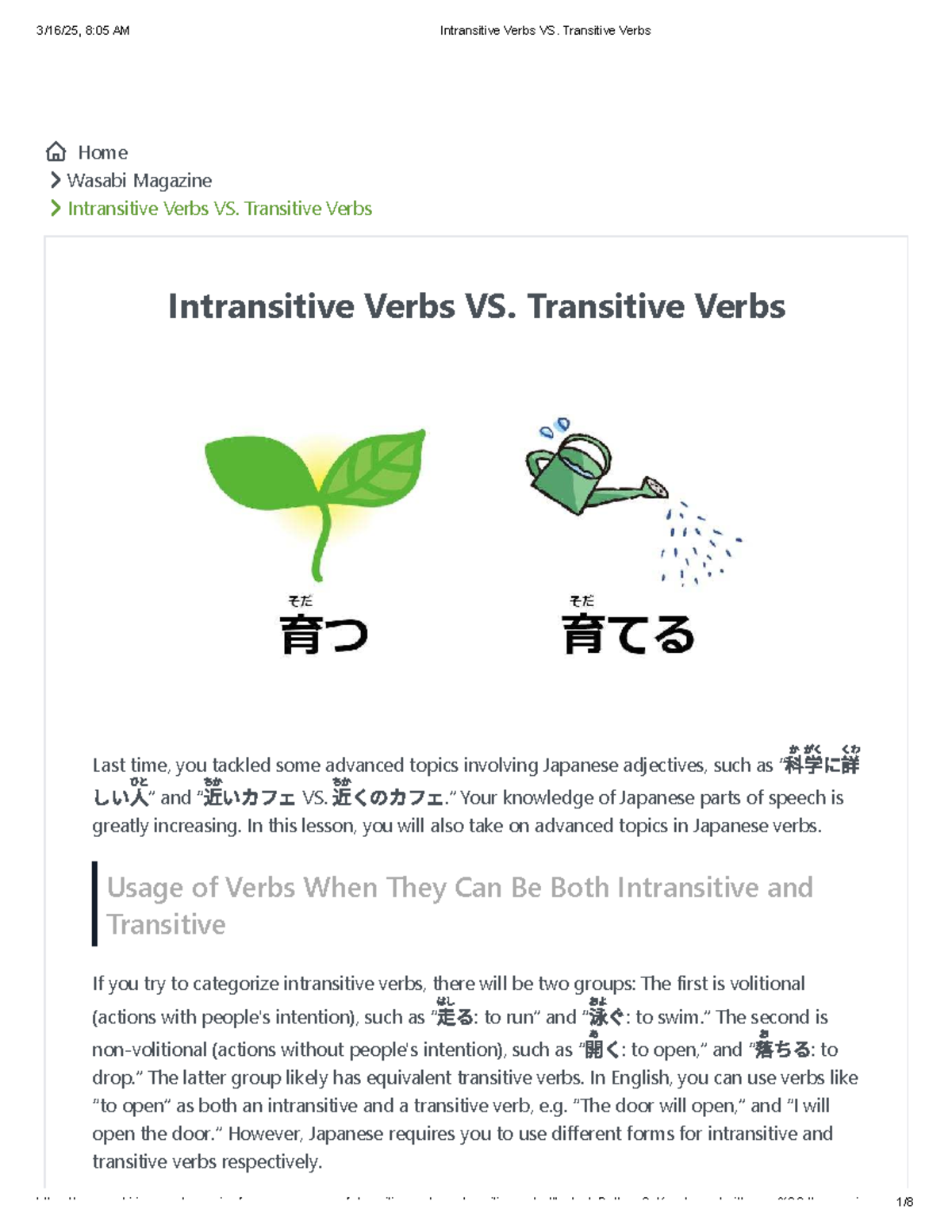Verbs in Japanese can be categorized into two main types: intransitive and transitive. Understanding the difference between these two types of verbs is essential for mastering the Japanese language. Intransitive and transitive verbs play a crucial role in constructing sentences and conveying meaning accurately.
While intransitive verbs indicate actions that are performed without any direct object, transitive verbs require a direct object to complete the action. Learning how to distinguish between these two types of verbs is key to forming coherent sentences in Japanese.
Intransitive and Transitive Verbs in Japanese
Intransitive Verbs: Intransitive verbs in Japanese are verbs that do not require a direct object to complete the action. These verbs typically describe actions that the subject performs on its own without affecting another object. For example, the verb “aruku” (to walk) is an intransitive verb because the subject can walk without needing to act on any specific object.
Transitive Verbs: Transitive verbs in Japanese, on the other hand, require a direct object to complete the action. These verbs involve an action that directly affects or is performed upon a specific object. For instance, the verb “taberu” (to eat) is a transitive verb because it requires a direct object, such as food, to complete the action of eating.
It is important to note that some verbs in Japanese can function as both intransitive and transitive, depending on the context in which they are used. For example, the verb “ageru” can be either intransitive (to rise) or transitive (to raise) based on the specific situation.
Understanding the distinction between intransitive and transitive verbs in Japanese is essential for constructing grammatically correct sentences. By recognizing whether a verb requires a direct object or not, learners can effectively convey their intended meaning in Japanese communication.
In conclusion, mastering the use of intransitive and transitive verbs in Japanese is crucial for achieving fluency in the language. By practicing and familiarizing oneself with the nuances of these verb types, learners can enhance their language skills and confidently express themselves in Japanese.
